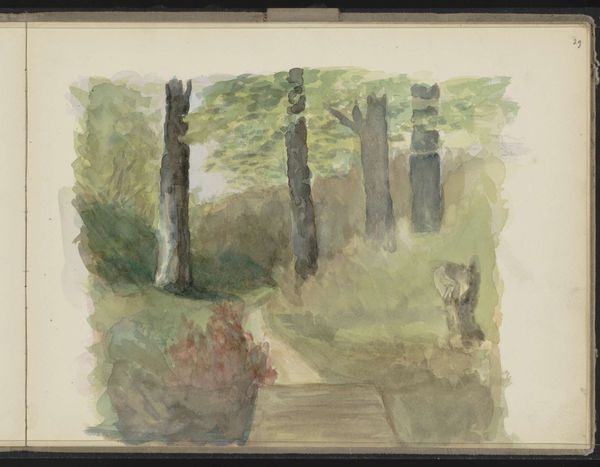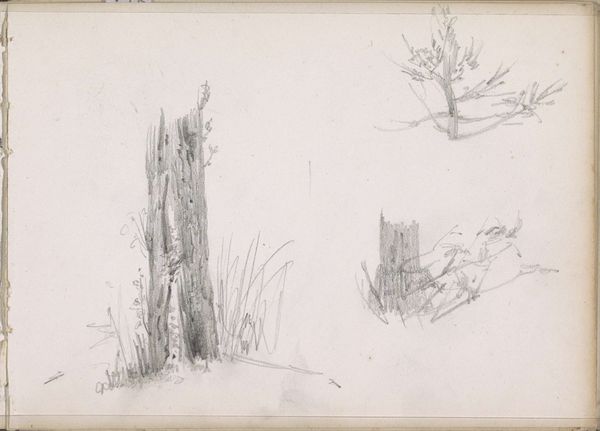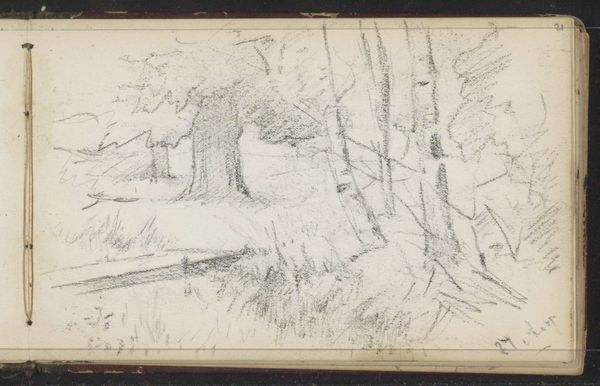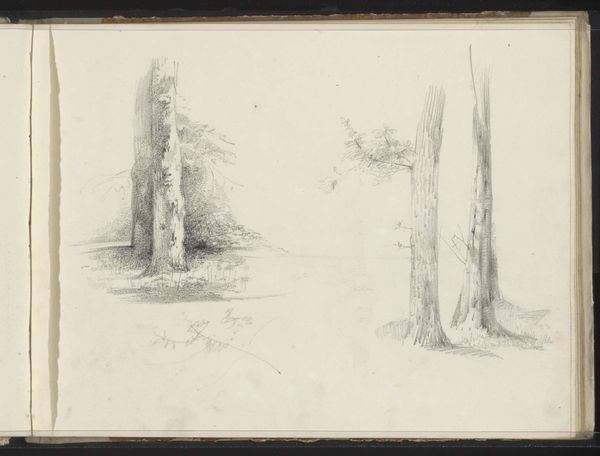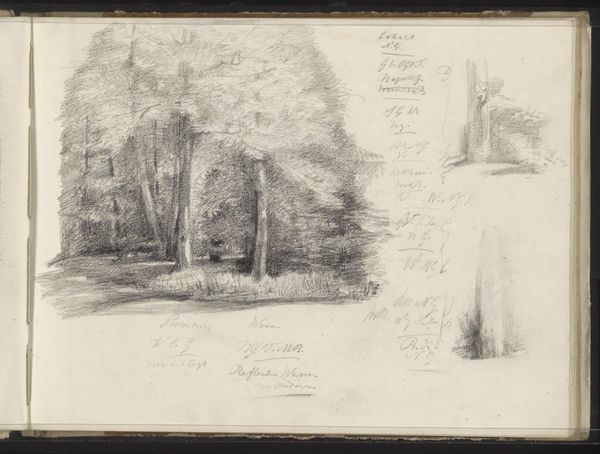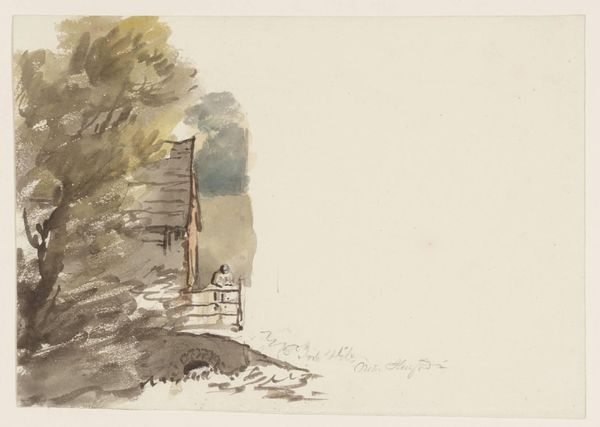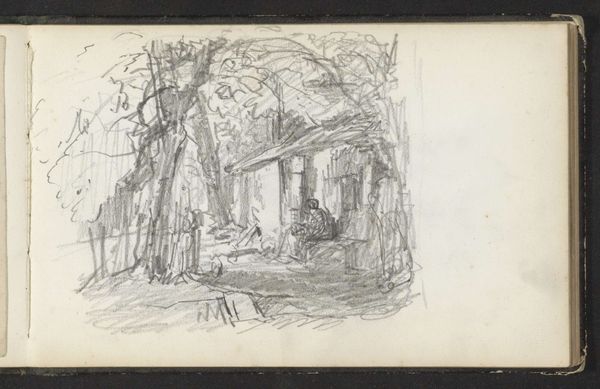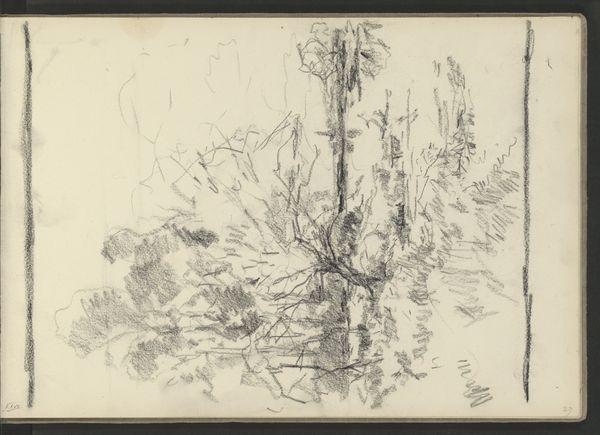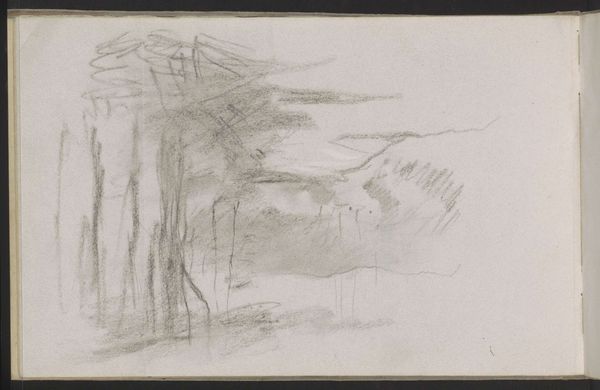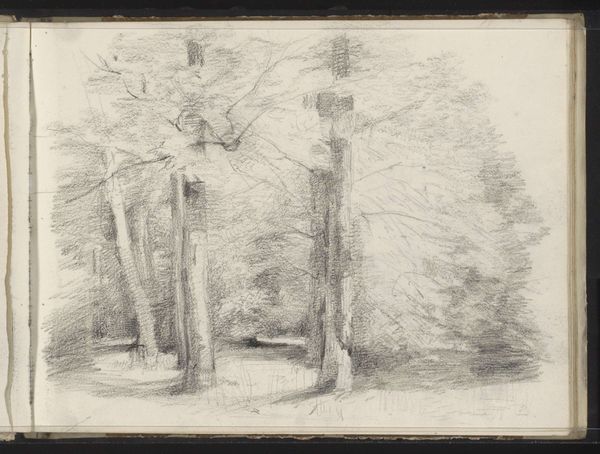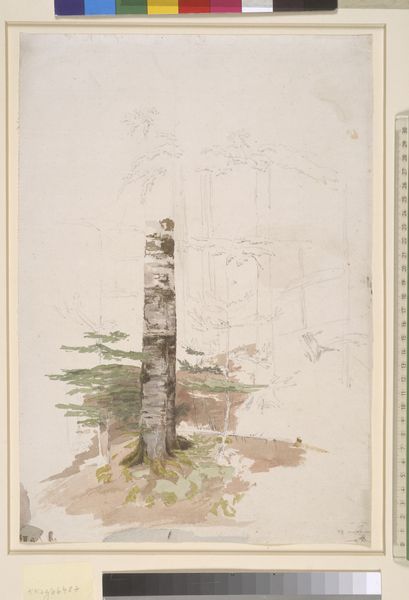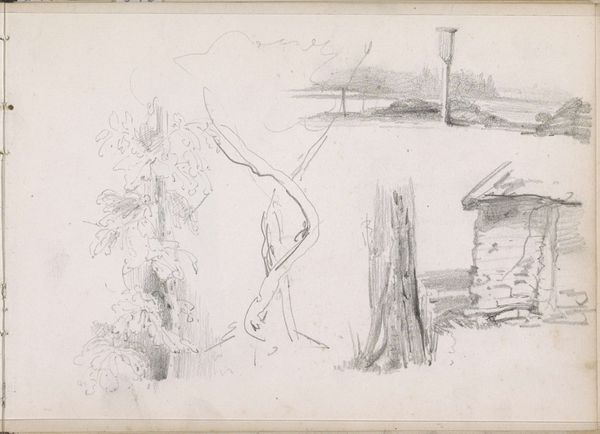
Copyright: Rijks Museum: Open Domain
Curator: What immediately strikes me is the ephemeral nature of this woodland scene, captured so delicately in watercolor. Editor: The mood is very calm, almost hushed. You can practically smell the damp earth. The palette, predominantly greens and browns, really evokes the tranquility of a forest interior. Curator: Exactly! This is Bospad, created in 1896. It's Chris Huidekooper's intimate plein-air rendering using watercolor and colored pencil. The medium's portability enabled Huidekooper to swiftly capture observations outdoors. This sketch acts as both document and self-portrait, embedding the artist’s own physical labor into it, while being among nature and processing their experiences. Editor: Situated in 1896, what socioeconomic context is at play here? Landscape art gained immense popularity and validation amongst middle classes who sought art that felt restorative during an age where more people worked in industrial factories and in cities rather than rural farms. Huidekooper is painting an idealized memory. Who did this restorative representation serve? What's deliberately excluded here? Curator: Interesting considerations, truly! In Huidekooper’s practice, we can look at the application itself. See how he builds form using very small washes of color? He really masters light and atmosphere through very controlled gestures. How the artist utilizes such ephemeral materials gives off this spontaneous impression, yet it is quite deliberate and methodically crafted. Editor: These plein-air scenes romanticize a nature the industrial revolution transformed and capitalized. Did Huidekooper critique systems of power or passively create pleasant images disconnected from pressing conversations and material realities of the era? The artwork itself feels like a loaded blank space in the conversation, reflecting questions on our modern world. Curator: And this makes me think about our contemporary artistic processes – the choices we make with our materials. What impact does that have socially? Editor: Art making and experiencing is always so complex! Even deceptively simple watercolor sketches hide worlds beneath the surface.
Comments
No comments
Be the first to comment and join the conversation on the ultimate creative platform.
